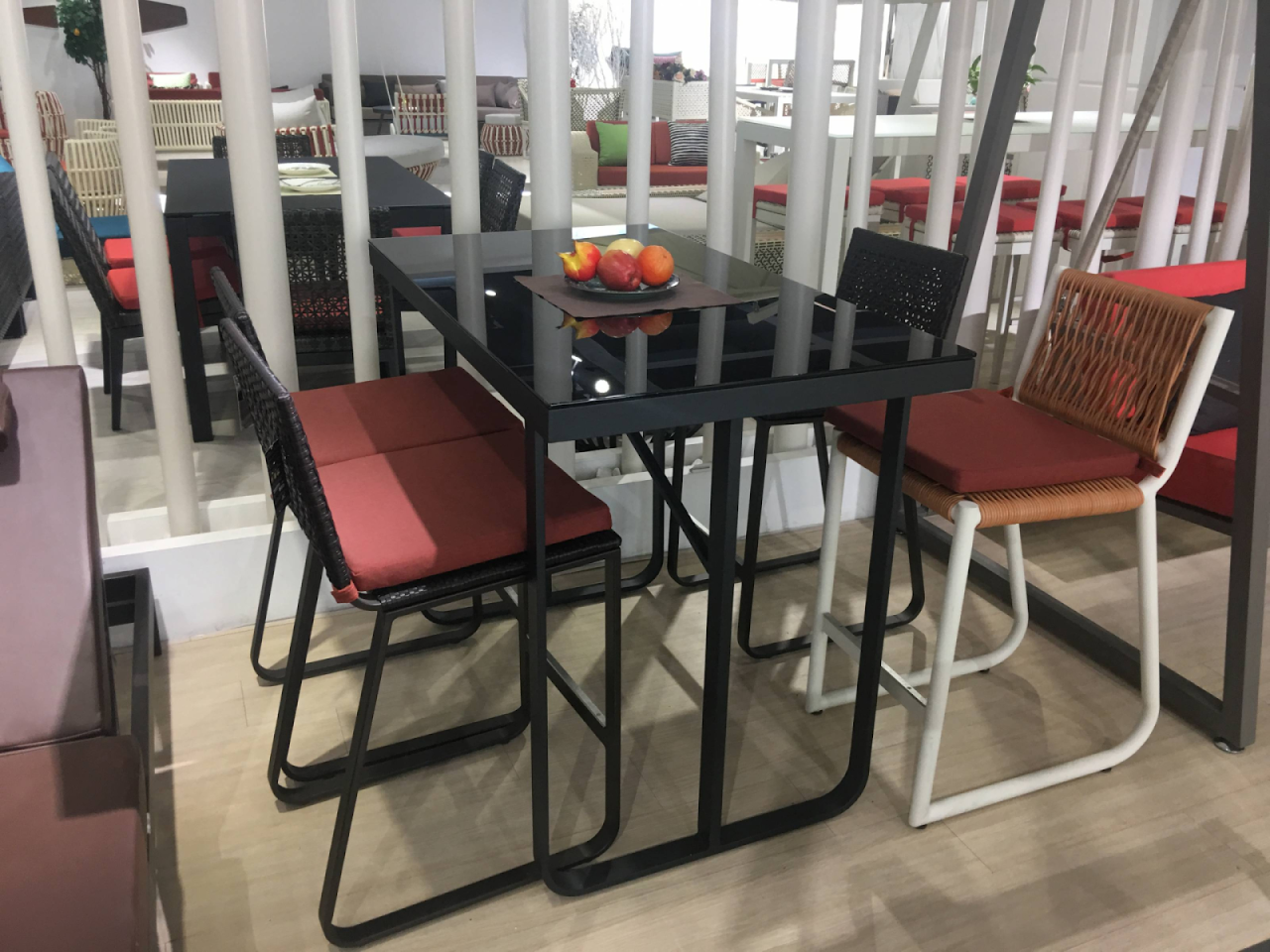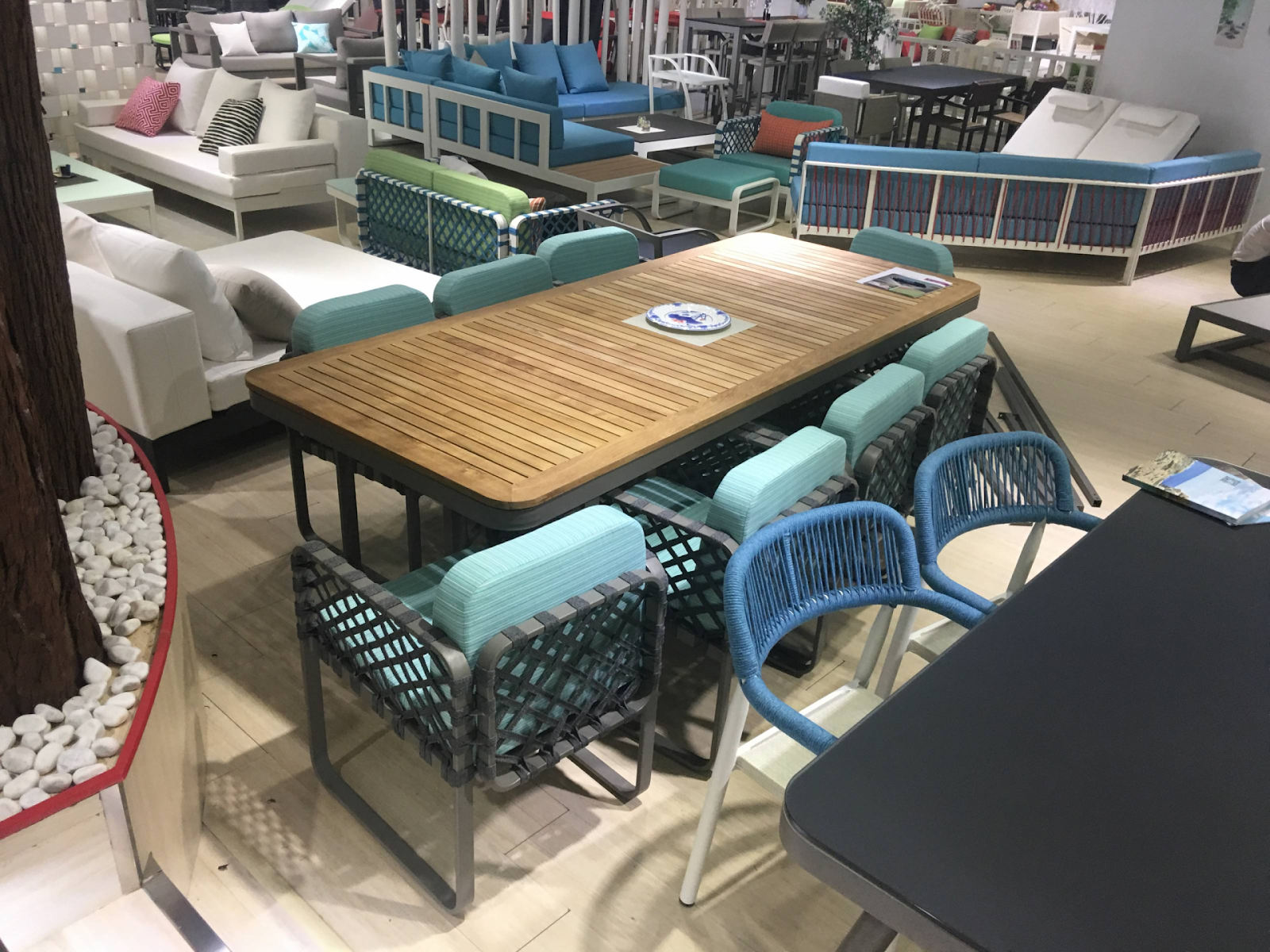How Long Should Commercial Furniture Last? - Babmar

Commercial furniture – whether it’s chairs for an office suite, dining tables or dining chairs for a restaurant, or commercial outdoor furniture – is designed and constructed to withstand years of heavy, regular use. From the material used for the frames to special fabrics, commercial furniture must maintain both its looks and performance under the toughest of conditions.
A typical lifespan is around a decade, but factors such as especially high usage may reduce that lifespan to around five years. The quality of construction and furniture materials play a role in its longevity; this is why it’s smart to invest in higher-end commercial furniture. Cheaper pieces will wear out much faster, especially if these pieces are used outside in harsh weather conditions. Proper maintenance is also a key to making your commercial furniture last as long as possible. Here’s what to know about choosing the right pieces for a commercial space and getting the most out of them.
What is Commercial Furniture?
Commercial furniture are pieces that are specially built from durable materials to withstand constant use in places like an office, a hotel, a restaurant, or a space like an outdoor bar area. The frames are built to be sturdier than residential furniture and to support heavier weights. Fabrics on upholstered chairs must hold up against repeated friction from use and withstand punishing outdoor elements like UV rays, chlorine, humidity, and rain.
Of course, the “look” of these pieces, such as outdoor chaise lounges or a modern outdoor sofa, must seamlessly blend into all kinds of decor. Quality pieces have silhouettes that aren’t too “trendy” so that they’ll complement the space without ever looking dated.
Investing in quality commercial furniture is essential for any business that wants sturdy pieces that make their customers comfortable and will look great for years.
Factors Affecting the Lifespan of Commercial Furniture

Commercial furniture is designed to last for as long as 10 years, although some pieces (like office chairs that are used every day) may wear out around the five-year mark. The lifespan of commercial furniture is dependent on several factors including how well it's built, how often it’s used, the kinds of materials used, and how well it’s maintained. If the furniture is used outside, such as outdoor dining furniture, the elements (rain, direct sunlight, and the like) will also affect how long it holds up. That’s where investing in quality, durable commercial furniture will pay off. There’s nothing sadder than something like faded, wobbly outdoor club chairs, unstable legs on dining chairs, or sagging cushions; worn-out pieces like that will seriously damage your brand.
Quality of Construction
Commercial furniture must adhere to certain construction standards. There are specifications to ensure that the pieces can withstand regular use and provide adequate support for heavier weights than that of your typical residential furniture. Outdoor pieces should be constructed from materials that also withstand rot, rust, and mildew, and yet are still light enough to be easily moved or stored.
Frequency of Use
The lifespan of commercial furniture is also partly affected by how often it's used. Some pieces will be used more often than others and thus, wear out more quickly. Most commercial furniture is built to last around a decade, but under constant use, five years is average. A quality warranty, which most commercial furniture manufacturers offer, will cover the product for three to ten years and protect your investment.
Material
Commercial furniture requires fabrics that will wear well against constant friction. For restaurants, many fabrics must also be fireproof.
These pieces must feature strong (yet lightweight) materials for the frame and be able to support heavier weights than those for residential pieces.
Besides being comfortable, the materials used in commercial pieces need to withstand other elements like UV rays, humidity, and the like. Many outdoor pieces rely on lightweight aluminum, woven resin, or weather-resistant teak wood for their support frames; fabrics should be treated to resist fading or mildewing.
Maintenance and Care
Getting the most out of your commercial furniture depends on proper maintenance. Frames made from teak wood should be oiled a few times a year. Aluminum can be wiped down to remove dust and debris. Regularly check for loose screws or a wobbly frame. Fabrics should undergo regular cleaning or be spot-cleaned with manufacturer-approved cleaning products for specific materials. Outdoor furniture may need to be stored during the “off-season”; ensure that the fabrics are dry beforehand to fend off mold or mildew.
Environmental Factors
Outdoor commercial furniture must hold up against environmental factors like UV rays, rain, chlorine, and the like. The materials – ranging from the frame to the fabrics — should be treated to successfully resist these punishing conditions. For example, quality commercial pieces like an outdoor dining set that uses high-quality materials kiln-dried wood versus particle board are more durable and will be able to endure more wear and tear which leads to a longer lifespan before it's time to replace your furniture.
How Long Should Commercial Furniture Last?

Commercial furniture is necessarily built to withstand heavy use and wear and tear over long periods. So how long should furniture last? The lifespan depends on proper care, the right materials, the conditions it's used under, and other factors.
The life expectancy for high-quality furniture that's given the proper care is typically ten years. Your most used pieces, such as an office chair or restaurant dining tables will have a faster expiration date of around five years.
How Often Should I Replace My Furniture?
So how often should you replace furniture that's used in a commercial setting? The question of when to replace your furniture starts with its construction quality, and whether or not the materials are of the highest quality or the cheaper kind that will wear out faster. The average lifespan of something like an outdoor coffee table, a hotel room sofa, or a restaurant dining table is about ten years. Replacing furniture with new pieces may be required in five years, depending on how much wear they undergo.
You can pretty much tell if things need to be replaced if fabric shows signs of dust mites or fraying at the edges, if there are unstable legs or a wobbly frame, or if poor-quality wooden furniture shows signs of rot.
Conclusion
The average lifespan of commercial furniture is about a decade, although certain types of furniture like hotel bedroom furniture or pieces for a restaurant dining room that are used more frequently may need to be replaced in about half that time. The things that will contribute to durability include quality construction from sturdy materials like solid wood or rust-resistant aluminum, and fabrics that hold up against direct sunlight and moisture. Proper cleaning and regular maintenance also go a long way towards extending the life expectancy of your furniture. Investing in the highest-quality commercial furniture will pay off in years of performance and good looks without having to replace it before it's fulfilled its purpose.
